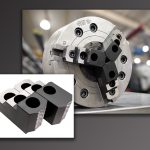Drill, Ye Tarriers, Drill!
Drill, Ye Tarriers, Drill!
States near the Marcellus Shale, a huge natural gas formation centered in Pennsylvania, are feverishly pursuing a $4 billion ethane "cracker" to be built by Royal Dutch Shell. The cracker will process ethane-rich gas from the Marcellus Shale into ethylene, and the ethylene will be used by the pharmaceutical, chemical and plastics industries. The plant will create 10,000 construction jobs and several hundred permanent jobs.
When I was growing up, our family played a lot of music on our then high-fidelity Rek-O-Kut turntable. One of my favorite albums was by The Weavers, a folk group popular in the 1950s and early 1960s. Their version of "Drill, Ye Tarriers, Drill," an American folk song first published in 1888, was terrific and I played it until the record wore out.
Tarriers were Irish-American workers who drilled and blasted holes in rock to make railroad tunnels, but the song seems strangely apropos today. If you haven't noticed, there's an oil and gas drilling boom going on the U.S. and it's one of those "under the radar" stories that is transforming our economy.
Previously inaccessible oil and natural gas can be extracted with new horizontal drilling, or "fracking," technology. This has led to oil and gas extraction on a grand scale throughout the U.S. As a result, in 2011 the U.S. became a net exporter of petroleum products for the first time in 62 years. New production helped reduce U.S. imports of crude oil by about 10 percent from 2005 to 2011.
Natural gas, now available domestically in large quantities and at low prices, is rippling through the economy. Jobs are being created in exploration and drilling; old, dirty coal-fired power plants are finally being shut down in favor of new natural gas-powered turbines; truck fleets are being converted to run on natural gas; and pharmaceutical manufacturing firms that depend on the ethane in natural gas are moving some production back to the U.S.
States near the Marcellus Shale, a huge natural gas formation centered in Pennsylvania, are feverishly pursuing a $4 billion ethane "cracker" to be built by Royal Dutch Shell. The cracker will process ethane-rich gas from the Marcellus Shale into ethylene, and the ethylene will be used by the pharmaceutical, chemical and plastics industries. The plant will create 10,000 construction jobs and several hundred permanent jobs.
"The oil sector is the key to the energy sector, and the energy sector is, I would argue, certainly one of the keys to the financial positioning of the economy for the United States," said Thomas Petrie, vice chairman of Bank of America Merrill Lynch, as reported in Tulsa World. Petrie spoke at the University of Tulsa about global petroleum prospects. "This is not the end of the oil age. ... If anything, it's the beginning of the new oil age," he said. Technology has "drastically improved" the supply availability of hydrocarbons in North America.
Indeed, the U.S. may become a major exporter of natural gas because many Asian countries pay $13 to $16 per million British thermal unit compared to less than $3 in the U.S., Petrie said.
This is obviously good news for companies that supply fracking operations. In a move both real and symbolic, the Youngstown (Ohio) Sheet & Tube mill that shut down more than 30 years ago is being reopened by V&M Star as a $650 million plant to make seamless pipes used in fracking. The new plant is expected to employ 350 full-time workers. And, as explained in our cover story, machine shops around the country are working feverishly to meet demand for the pipes, parts and equipment needed by drillers, and are adding workers to do so.
"It's dramatic. It's transformative," said Edward Morse, director of global commodities research at Citigroup, as quoted in USA Today. He said the U.S. is importing a smaller share—49 percent in 2010, down from 60 percent in 2005—of the oil it uses. "We're moving toward energy independence," he concluded.
The U.S. will be grappling with the implications of fracking for many years. Questions about its environmental impact remain, such as its effects on groundwater. Fracking operations were even implicated in causing small earthquakes in Ohio last year.
But fracking is clearly putting the "tarriers" back to work. I doubt they'll be singing "For it's work all day for the sugar in your tay" again, but it may be time to fire up that old turntable once more.
—Alan Rooks, Editorial Director





